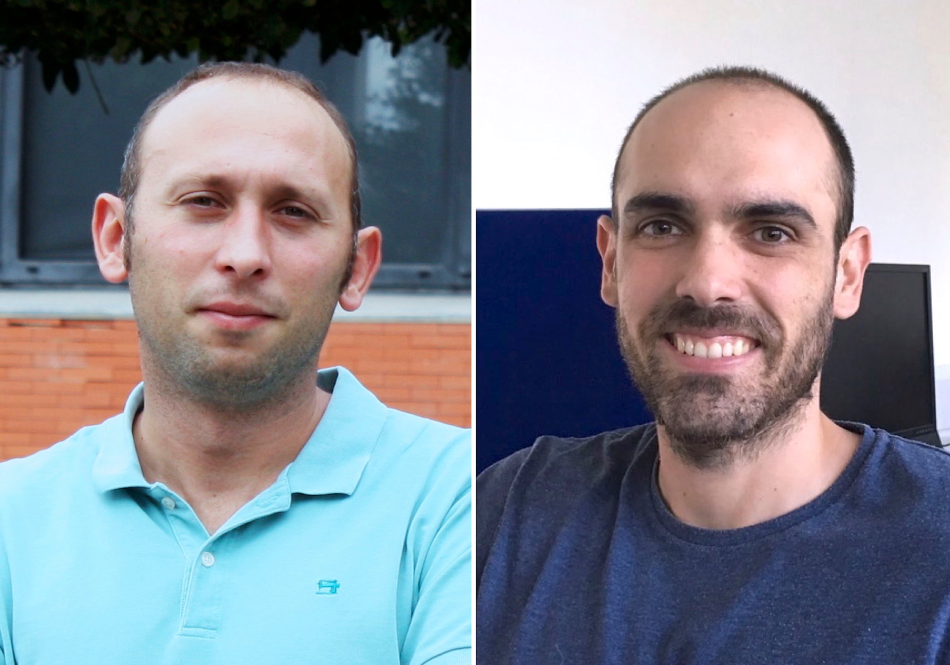Jul 2 2020
A new study by researchers at the Institute of Materials Science of the University of Valencia (ICMUV) has been able to detect excitons—particles that cause the interaction between light and matter—trapped in 2D materials that develop moire patterns, which is one of the major challenges in this field of research.
 Alejandro Molina and Mauro Brotons-Gisbert. Image Credit: RUVID.
Alejandro Molina and Mauro Brotons-Gisbert. Image Credit: RUVID.
The study results have been reported in the Nature Materials journal and represent a breakthrough in the design of new materials for future devices applicable to the quantum computer.
Recently, researchers have expressed a higher interest in discovering alternatives to the use of electrons in the information transport, with the goal of optimizing the efficiency of devices. For instance, the basis for spintronics is the study of spin—an electron’s magnetic moment—as an alternative for the electron.
More recently, the advent of semiconductors like transition metal dichalcogenides or 2D materials like graphene has enabled the prospects of using other particles, for example, the exciton, which is formed by an electron-hole pair and does not have any electrical charge, but exhibits immense potential for quantum computing.
Excitons feature brilliant properties; they occur in semiconductor materials and their properties are specifically relevant in 2D materials, with a thickness of just a few atoms. Particularly, they can be optically controlled by using lasers to store spin information. The identification of excitons is crucial to advance the use of 2D materials in new optoelectronic applications.
Along this line, Alejandro Molina, Ramón y Cajal researcher at the ICMUV’s Optoelectronic Materials and Devices unit, has proposed theory and performed simulations using the Tirant supercomputer of the University of Valencia to detect what are called the “interlayer excitons.”
Such excitons tend to be trapped due to the interaction of two sheets of transition metal dichalcogenide (TMD) atoms. When stacked with a small twist, they tend to form a moire pattern (*1).
Moire patterns exert an impact on the properties of materials and result in a new quantum material with totally distinct properties than those of its components. It is highly challenging to achieve controlled moiré patterns and identify them. The potential to realize brilliant properties renders this physical phenomenon a valuable tool for optoelectronics.
Excitons trapped in atomic moire patterns hold great promise for the design of new quantum materials, and research on their fundamental properties is crucial for future developments in this field.
Mauro Brotons-Gisbert and Brian D. Gerardot, Researchers, Quantum Photonics Laboratory, Heriot-Watt University
Brotons-Gisbert and Gerardot are the main researchers of the project.
Understanding the new physical properties in moire patterns is a new challenge for Materials Science, and theoretical and simulation work is essential here.
Alejandro Molina, Ramón y Cajal Researcher, Optoelectronic Materials and Devices Unit, Institute of Materials Science of the University of Valencia
The study offers insights into the properties of excitons associated with moire patterns. Controlling the spin of excitons is crucial for applications that combine spintronics and photonics, for example, creating and manipulating qubits—the basic information unit of the quantum computer—through optical means.
Journal Reference:
Brotons-Gisbert, M., et al. (2020) Spin-layer locking of interlayer excitons trapped in moiré potentials. Nature Materials. doi.org/10.1038/s41563-020-0687-7.
Source: https://ruvid.org/